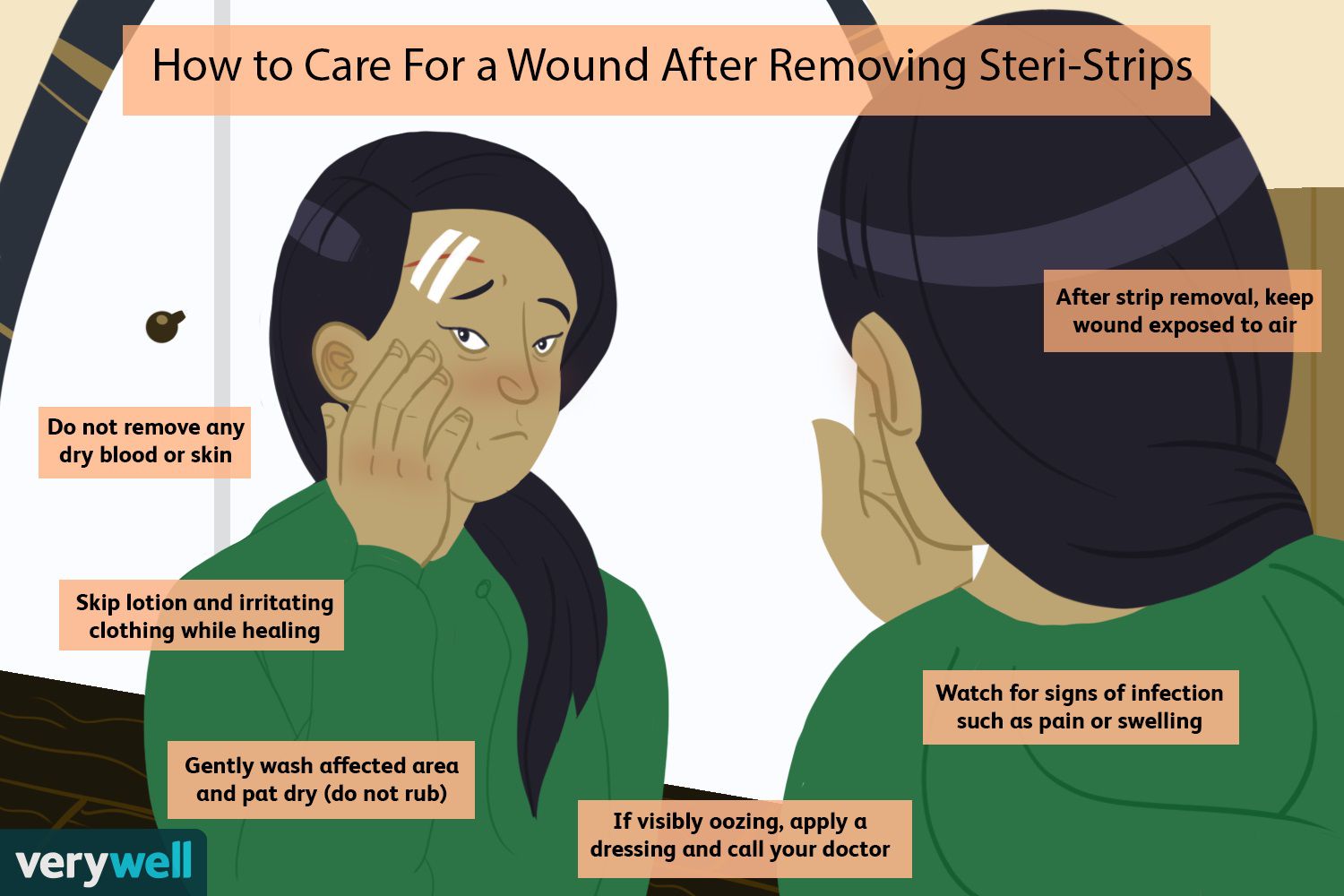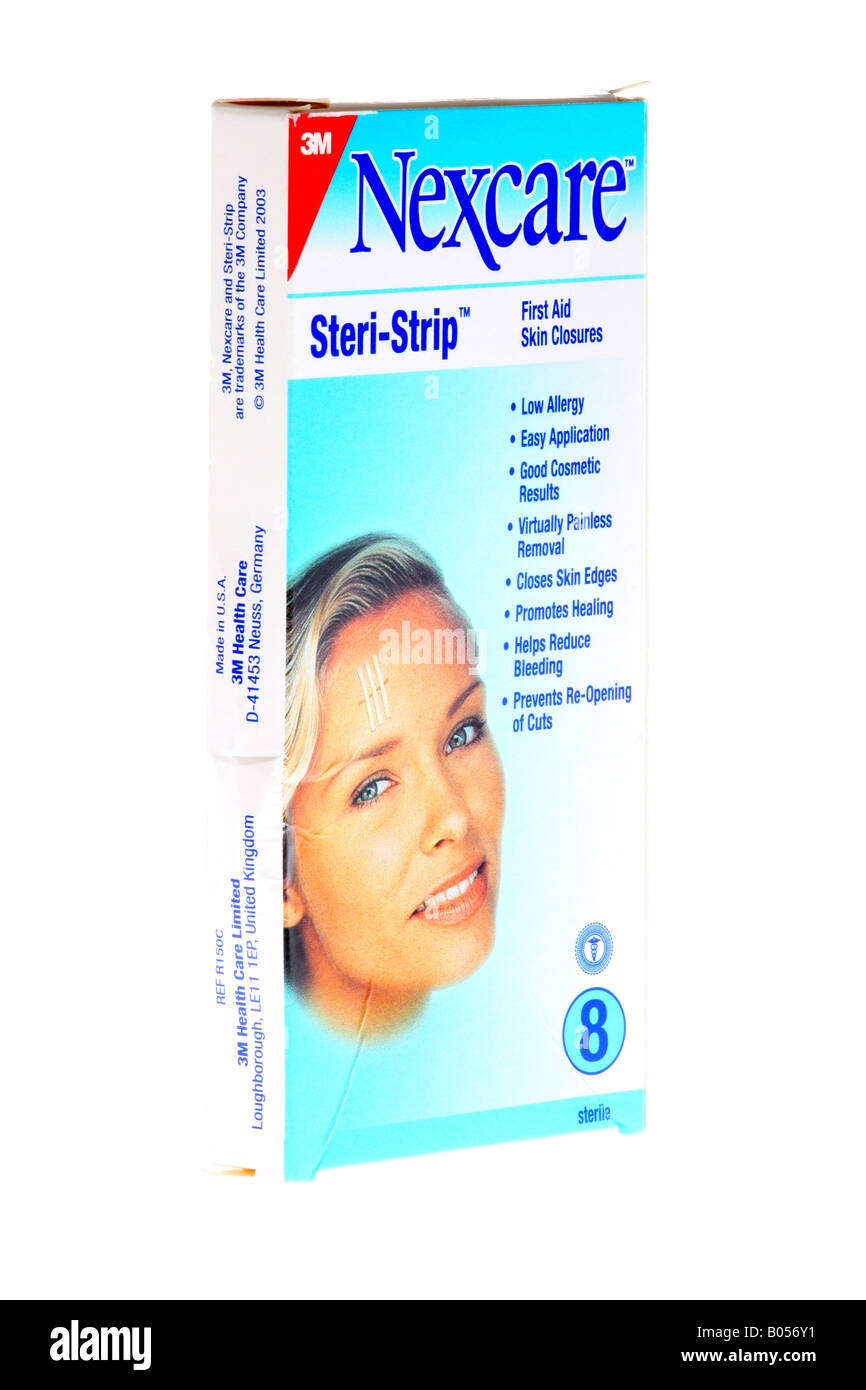Steri-Strips Still On After 4 Weeks: What You Need To Know
Discovering that your steri-strips are still on after four weeks can raise concerns, especially if you're unsure about their intended healing period. Steri-strips, also known as wound closure strips, are designed to help close and protect surgical or traumatic wounds. However, their longevity depends on various factors, including the nature of the wound and individual healing processes. Understanding whether this is normal or if there's cause for concern is crucial for your health.
As we delve deeper into this topic, we will explore the reasons why steri-strips might remain intact beyond the typical timeframe, the potential implications, and how to manage this situation effectively. Whether you're recovering from surgery or dealing with an injury, staying informed ensures you make the right decisions for your well-being.
This article provides comprehensive insights into the longevity of steri-strips, helping you understand when to consult a healthcare professional and how to care for your wound properly. By following expert advice and understanding the healing process, you can ensure optimal recovery.
Read also:Tyler The Creator Boyfriend Exploring His Relationships And Personal Life
Table of Contents
- What Are Steri-Strips?
- How Long Should Steri-Strips Stay On?
- Why Are Steri-Strips Still On After 4 Weeks?
- Impact on the Healing Process
- How to Safely Remove Steri-Strips
- Tips for Caring for Steri-Strips
- Common Mistakes to Avoid
- When Should You See a Doctor?
- Alternatives to Steri-Strips
- Conclusion and Next Steps
What Are Steri-Strips?
Steri-strips are adhesive strips used in medical settings to close wounds or incisions. They provide support by holding the edges of a wound together, promoting healing while minimizing scarring. These strips are often used as an alternative to sutures or staples, especially for smaller wounds or those that don’t require invasive closure methods.
Key Features:
- Flexible and lightweight
- Water-resistant
- Designed to stay on for several days
- Helps reduce tension on the wound site
Understanding what steri-strips are and their purpose is essential in determining whether they should remain on your skin for extended periods.
How Long Should Steri-Strips Stay On?
Typically, steri-strips are designed to stay on for 7 to 14 days. During this time, the wound underneath should have healed sufficiently to no longer require external support. However, the exact duration depends on factors such as:
Factors Influencing Duration
- Location of the wound
- Severity of the injury
- Individual healing rates
- Environmental exposure
While most steri-strips fall off naturally within two weeks, some may remain adhered longer due to differences in skin type or adhesive quality.
Why Are Steri-Strips Still On After 4 Weeks?
If your steri-strips are still on after four weeks, it could be attributed to several reasons:
Read also:Puppy Songs Cheese Tax Lyrics A Comprehensive Guide To The Catchy Melody
1. Strong Adhesive Bond
Modern steri-strips often use advanced adhesives that form a strong bond with the skin. This can prevent them from detaching even after the recommended timeframe.
2. Individual Healing Rates
Some individuals heal slower than others, meaning the steri-strips may still be needed to support the wound closure process.
3. Environmental Factors
Exposure to moisture, sweat, or harsh chemicals can affect the adhesive but may not always cause immediate detachment.
It's important to assess whether the steri-strips are still serving their purpose or if they've outlived their usefulness.
Impact on the Healing Process
Having steri-strips still on after four weeks can have both positive and negative effects on the healing process:
Positive Effects
- Continued protection against infection
- Reduction in tension on the wound
- Minimized scarring
Potential Risks
- Increased risk of skin irritation
- Possibility of adhesive residue causing discomfort
- Delayed removal may hinder natural healing progression
Consulting a healthcare professional is advisable if you're unsure about the impact of prolonged steri-strip usage.
How to Safely Remove Steri-Strips
Removing steri-strips after an extended period requires caution to avoid damaging the surrounding skin or reopening the wound. Follow these steps:
- Clean the area gently with soap and water.
- Use a sterile pair of scissors or tweezers.
- Peel the strips slowly in the direction of hair growth.
- Apply a gentle moisturizer to soothe the skin.
Always ensure that your hands and tools are clean to prevent infection during the removal process.
Tips for Caring for Steri-Strips
Proper care of steri-strips can enhance their effectiveness and prolong their lifespan:
- Avoid soaking the strips in water for extended periods.
- Protect the area from direct sunlight and harsh chemicals.
- Keep the wound clean and dry to prevent infection.
- Monitor the strips for signs of loosening or irritation.
By following these tips, you can ensure that your steri-strips function optimally throughout the healing process.
Common Mistakes to Avoid
Here are some common mistakes people make when dealing with steri-strips:
- Removing the strips too early, which can disrupt the healing process.
- Using harsh chemicals or scrubbing the area, leading to skin irritation.
- Ignoring signs of infection or discomfort.
Avoiding these mistakes can help ensure a smoother recovery journey.
When Should You See a Doctor?
While steri-strips are generally safe, certain situations warrant medical attention:
- Signs of infection, such as redness, swelling, or discharge.
- Persistent pain or discomfort around the wound site.
- Strips remaining on for more than four weeks without natural detachment.
Seeking professional advice ensures that any underlying issues are addressed promptly.
Alternatives to Steri-Strips
If steri-strips aren't suitable for your situation, consider these alternatives:
1. Surgical Glue
A fast-drying adhesive that seals wounds without the need for strips.
2. Bandages
Provide additional protection and support for larger wounds.
3. Sutures or Staples
Used for deeper wounds requiring more secure closure.
Discuss these options with your healthcare provider to determine the best course of action for your specific needs.
Conclusion and Next Steps
In conclusion, steri-strips still on after four weeks may not always indicate a problem, but it's important to monitor the situation closely. Understanding the reasons behind their prolonged adherence and knowing when to seek medical advice can significantly impact your recovery journey.
Take Action:
- Leave a comment below with your thoughts or questions.
- Share this article with others who may find it helpful.
- Explore other articles on our site for more health-related insights.
Stay informed and proactive about your health to ensure the best possible outcomes.


